Since the release of the expensive Nexus 9 and the lack of a successor to the Nexus 7, I’ve been looking for a reasonably priced mid-ranged tablet to replace my Nexus 7 2013.
I think I may have finally found it with the Asus MeMO Pad 7 ME572. I’m not sure how I missed its release. It’s probably a mix of Asus’ lack of marketing in the US and the availability being pretty much only at one store. Either way, I picked one up when it went on sale a couple weeks ago.
Here’s what I think about it after using it since.
Specs sheet for the Asus ME572
| MeMo Pad 7 ME572 | |
| Screen | 7 inch, 1920×1200 px resolution, IPS touchscreen, 400 nits |
| Processor | Intel Atom processor Z3560(64-bit), quad core, 1.83 Ghz |
| Camera | 5MP rear with LED flash, 2.0MP front facing |
| Video | PowerVR G6430, 457-533 Mhz, 136 GFLOPs |
| Memory | 2 GB LPDDR3 |
| Storage | 16GB Flash |
| Connectivity | Wireless b/g/n, Bluetooth 4.0 |
| Ports | microSD slot(up to 64GB), microUSB, headphone |
| Baterry | 3950 mAh |
| Operating system | Android 4.4.2 Kitkat |
| Size | 200.7 mm or 7.9” (w) x 114.3 mm or 4.5” (d) x 7.6 mm or .3” (h) |
| Weight | 272.2g or 9.6 oz |
| Extras | Stereo speakers, GPS, ambient light, sleep/wake |
Design
If you owned the 2013 Nexus 7, you’ll find the Asus ME572 to be quite familiar. The tablet is nearly identical on the front, with a few exceptions. It’s a little lighter and thinner, which I really appreciate. The build quality also feels really solid. The shape is awfully rectangular and I was kind of worried about those corners when I first saw them. Fortunately, they didn’t bother me one bit. They chose good materials and I’m pretty impressed with the quality, considering the price tag.
On the front, you have the 7” screen. There is also a light sensor and a front facing camera at the top right of the screen. I wasn’t kidding when I said it was like the 2013 Nexus 7. If you look at the screens and glass, the camera placement, bezel sizes and screen dimensions are identical. If you look close enough, you can actually see the hole for the LED indicator which unfortunately isn’t present in this model. So they are definitely sharing components here, which is ok for me since I really liked the Nexus 7.
The back of the tablet is a little… well, different. I don’t know exactly what they were going for but I think they were trying to make the tablet look more like a flashy accessory to carry around or something. It looks ok, but I would have preferred a more plain looking approach. The material is a hard plastic and the texture has a decent grip. The smooth edge on the side is less thick than the rest of the tablet and it offers a clever and discreet place to put all the FCC and regulatory info. There is a 5.0MP camera on the upper left hand side as well.
For the connections and buttons on the edges, Asus again went with the power button and volume rocker on the right side, but this time they did something a little more unorthodox. The volume is above the power button instead of the traditional spot for most devices, which is below. At first I got them confused a lot, but I adapted. After a couple weeks, I actually like the volume being closer to the top edge because it’s easier to access with my left hand when holding it in landscape mode.
Stereo speakers are located centered on the top and bottom edges. The The MicroUSB is located on the bottom, just right of the bottom speaker. The headphone jack is located on the top right edge. There is also a MicroSD card slot on the upper left edge. Unfortunately, there’s no door for the MicroSD, but it’s recessed enough to where the card doesn’t stick out at all. See my pictures for a closer look.
For sensors, the tablet has the typical accelerometer and orientation sensors. There is also a light sensor and magnetometer. GPS is built in, in case you planned on using the tablet on the road. The specs advertise that there is a gyroscope, however my sensor app didn’t detect it. There is also no vibration motor, so no haptic feedback. Sleep/wake function worked fine for me and is behind the LCD screen(lower left I believe). I took a stab and checked if they accidentally included wireless charging, but they didn’t.
Screen
If you liked the screen on the Nexus 7, you’ll equally like the screen on the Memo Pad 7 as well. It’s a 7” 1900×1200 IPS screen, which is rated for 400 nits of brightness. I actually measured 465 nits of brightness on my screen, which is great! I had no trouble using it in the office and barely noticed any glare, even outside. The oleophobic glass made swipe gestures a breeze and kept the glass reasonably clean during extended use.
Viewing angles on the screen were perfect. I was able to view movies at extreme angles and still was able to make everything out. Not that I would ever watch a movie like that, but it would be a good feature to have if you were sharing a movie on an airplane. I did notice a little bit of backlight bleed, which is probably my only gripe with the screen. It’s not bad and hardly noticeable since most apps utilize the full screen. I only notice it in dark rooms with a black screen, so it’s not that often and hardly a deal breaker. No dead pixels, as expected.
Blacks and whites actually looked above average for an IPS screen. I compared it with the Lenovo S8-50 (another tablet I’ve reviewed) and the Nexus 7 2013. The whites were slightly better than the Nexus 7 and were FAR better than the yellowish whites of the S8-50. Blacks were all about the same across the board – not AMOLED black, but about as good as IPS gets.
Hardware and performance
This MeMo Pad 7 tablet comes with 2GB of RAM and the new Moorefield Intel Atom Z3560 quad core processor. This is a 64-bit processor, making this tablet a little more futureproof than the competition. Oddly, the CPU benchmarks slightly slower than its predecessors in regards to physics scores, but it makes up for it with the impressive GPU scores. Regardless, apps open quickly and the tablet performed very smooth.
The screen responsiveness was very good and felt natural. The button responsiveness is also good but I did notice it takes a few seconds of holding the power button before it turns on. It took about 36 seconds to boot the device from being completely powered down, which is quite good.
Wireless performance leaves something to be desired. I haven’t figured it out yet but I get erratic wifi performance at home only, and the OS makes sure to let me know every time I turn the tablet on, with a message that connection is poor. I took Speed test measurements in three places in my home and one outside. At the router itself, I for a download speed of 24Mbps and upload speeds of 12Mbps, which is lower than my max bandwidth speed. At 25 feet away and behind a door, I got the same results. From 50 feet away, across the house and two walls between, I got 15Mbps down and 12Mbps up. Finally, outside, two walls between and over 75 feet away, I got 16Mbps down and 12Mbps up. These are all averages too – I took multiple readings at each spot and got varying results. Needless to say, the Wifi performance is not consistent. I wouldn’t rate it as poor though, as I didn’t really notice the performance drop during my normal use.
The operating system Asus chooses to use is ZenUI, which is typical for all their new phones and tablets. It’s KitKat 4.4.2 but lightly skinned from the Vanilla flavor of the OS. Most of the settings menu layout is pretty much the same and the notifications panel is the same layout, with the exception of the look and color. The quick settings panel looks a lot different and has a lot of options to toggle. I actually found the OS to be quite nice for the most part. There wasn’t anything that really bothered me but I was kind of annoyed with the amount of bloatware that you can’t delete. An easy fix though if you use a custom launcher where you can hide the apps you don’t use.
Asus includes more than a dozens apps with ZenUI: Backup, Browser, Contacts, Data transfer, Dictionary, Do it later, Email, File Manager, Flipboard, Gallery, Microfilm, Mirror, Music, MyAsus, Mywater, Omlet Chat, Party Link, PC Link, Power Saver, Quick Memo, Remote Link, Setup Wizard, Share Link, Splendid, Story, SuperNote, Weather, WebStorage and Zinio. I certainly didn’t get to use them all, but most of the ones I did use weren’t all that useful.
Really, some of these are nice to have if you can’t figure out your own way to do it, but I don’t like the fact that you can’t delete them if you don’t want them. The amount of updates you have to do on these apps, out of the box, really caught my unwanted attention. The ONLY nice thing I can say about some of these apps is they are compatible with the split screen feature on the tablet. So you can use the browser while watching a video on Youtube if you want. It works well, I just wish the app selection was better. Chrome, for example, isn’t compatible so you have to use the Asus browser.
I ran a number of benchmarks on the ME572 and was pretty impressed, for the most part, but also surprised by the CPU scores. Here were my results:
- 3DMark: Ice Storm Score: 16604 (Graphics: 16959, Physics: 15472)
- Antutu: Total:39441, Single Core: 6482(64-bit), 5512(32-bit) , Multi-Core: 25957(64-bit), 21920(32-bit), HTML5: 9055
- Geekbench 3: Single Core: 761 , Multi-Core: 2357
- Quadrant: 18805
I noticed the Physics scores on the CPU were lower than the Z3745(the predecessor from last year). It’s not by much but was surprising since the CPU is permanently clocked higher and not just reliant on turbo-boost. The GPU score was much higher though, which makes sense with the superior GPU. Please see the pictures for more detailed results.
In addition, I did a time test to see how long it takes to copy a 2 GB movie to the tablet. For this tablet, it took 56 seconds, which is really fast in my opinion.
Speakers
The sound quality on this tablet is turning out to be one of my favorite features. It’s certainly not the best I’ve ever heard, but I’m very impressed with what I’ve been hearing for a budget tablet. The unit comes with two stereo speakers, centrally located on the top and bottom edges. I would have preferred them just make these speakers front facing, but if they chose to make them side facing for the reason of sound quality and/or cost, that’s fine by me. Anything is better than rear facing, which Asus has been notorious of in the past.
The quality of the sound is actually very good. I was able to hear and both highs and lows with little distortion at high volumes. I didn’t notice any tinny sounds lie I have experienced with previous tablets. The max volume was plenty loud enough, with my test song measuring 60dB from 12 inches away(where your head would be) and over 80dB right at the speaker. The lowest I could audibly detect in the bass was 40Hz.
My only criticism on the speakers is the location and design of the ports. They are literally small slots that can easily be covered up by your hands. When that happens, you basically can’t hear a thing. I’ve had phones like this and learned special ways to hold them in order to not occlude the speakers. I’m sure with time I could adapt, but I do wish they weren’t centered so it would be easier to avoid them.
Camera
The 5MP shooter included with this tablet is nothing special. It’s really not much different than the 5MP camera in the Nexus 7. In normal lighting, the pictures are decent, but in low lighting, the pictures are grainy/noisy and pretty bad to look at. There’s no flash either, so in low light, you’re pretty much out of luck. For most people, this probably won’t be an issue, since they probably opt to using their phones for shooting pictures. The front facing camera is 2MP, and is actually pretty good for video calls. In low light, it appears that the image is not as noisy as I’ve experienced in the past with other tablets of this size.
The camera software is something that fills in some of the gaps with the lack of a good rear camera. The pictures I took on Auto were as described above, but I was able to improve the image slightly by switching to night mode. It basically just blurs the noise, but it’s good to have if you’re in a pinch. There’s also a gif recorder, HDR, panorama and smart remove modes. My favorite was time rewind, which is similar to Apple’s camera, where you can take a picture and shuffle forward and backward in time to catch the right picture with their eyes open. It’s perfect if you’re taking pictures of your kids.
Battery life
The ME572 comes built with a 3950 mAh battery. I ran multiple battery tests on the tablet to see how well it would perform and last.
The first was using Geekbench 3 which basically just leaves the tablet on. At max brightness, I got a score of 3488 with a time of 5 hours and 48 minutes. The second test was a continuous video loop of a 720p video. The screen was set to 150 nits(using a light sensor). The tablet lasted 11 hours and 20 minutes from a full charge. That was actually pretty shocking to me since other tablets with larger batteries didn’t last that long.
Box and Accessories
If you’ve purchased a lot of things from Asus before, you’d know that they have two levels of packaging: really good and oops. Now in their defense, I’ve never seen anything poorly packaged to the point of where something was damaged – there’s just been times when I really struggle to get the box open(like with the 2012 Nexus 7). The same is the case with the MeMo Pad 7. Once you take off the plastic, there’s a nice little tab with an arrow, implying that you should pull it. My advice: don’t pull it – it’s not coming out that way, no matter how hard you pull! Just pull the inner box out the old fashioned way and it comes out just fine. Inside you’ll find the tablet, wall charging brick and a USB cord. Nothing else special to note of.
There’s not a whole lot to choose from in terms of cases. I found some on auction websites, but the only one I found from a legitimate retailer can be found here.
At least there are multiple colors to choose from and they include the sleep/wake functionality. Asus also has a case listed on their website, although I haven’t seen it for sale anywhere yet.
Price and availability
Best Buy currently has the tablet on sale for $180, but I’ve seen it go as low as $150 like it did over the holiday. At the current price, the tablet is a good deal, but cheaper would certainly be more welcome. The tablet comes in three different colors: black, champagne gold and burgundy, but I’ve only seen the black and gold for sale so far. You can view the deals at Best Buy here. Asus is also selling the tablet through Amazon here, although availability is more limited.
Final thoughts
Overall, I’m pretty impressed with the tablet, with the exception of the inconsistent Wi-Fi performance. Since there are little or no successors to the 2013 Nexus 7, the MeMo Pad 7 ME572 seems like the best fit for a budget, mid-range performance 7” tablet.
They focused on improving the things that matter and omitted other things, like wireless charging and the notification light, to keep costs low. I welcome that approach, since those things in addition to the camera mean very little to me, although it might be a deal-breaker for some.
If that someone is you, there are many other 7” tablets out there, but the price tags and features fluctuate. From what I’ve seen, this tablet offers the most well rounded experience and focuses on performance and display quality, which I think matter most. If you’re looking to keep the same features and more, you might have to venture into the 8” tablet range, as tablet manufacturers seem to be focusing there the most this year.
Please leave a comment below if you have any questions or would like to leave feedback on what you think of this tablet.

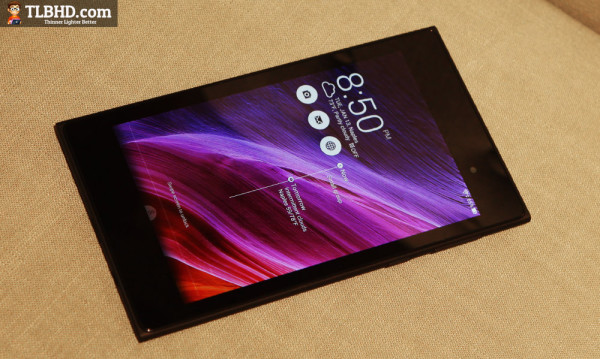
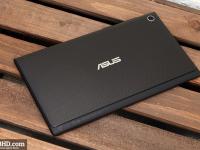
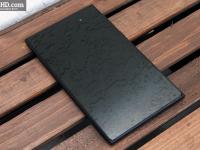
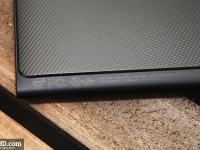
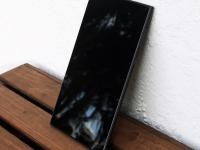
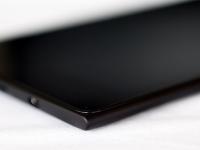
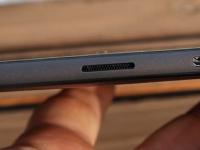
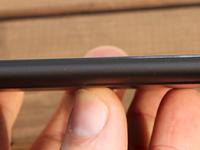
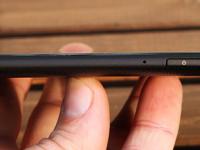
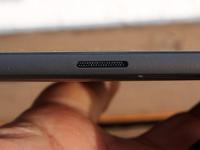
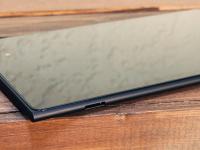
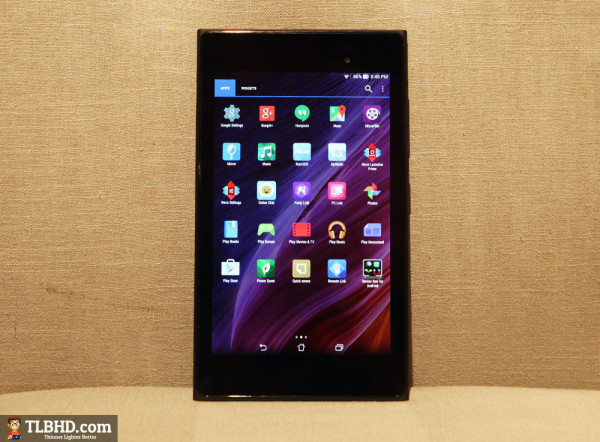
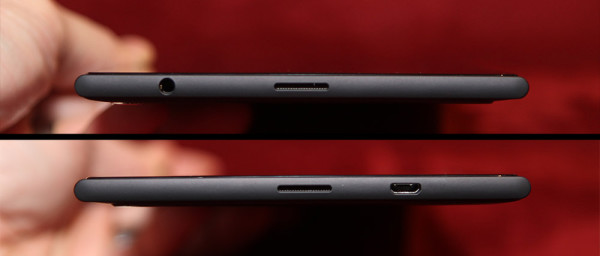
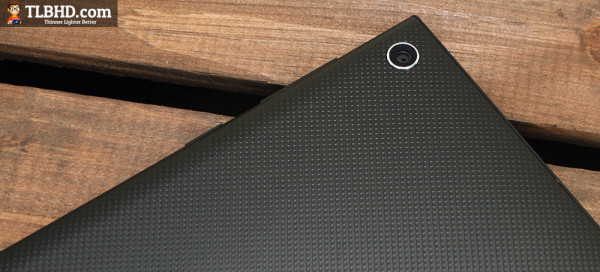

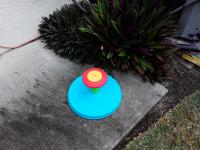
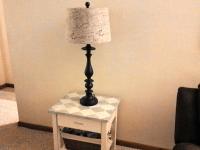


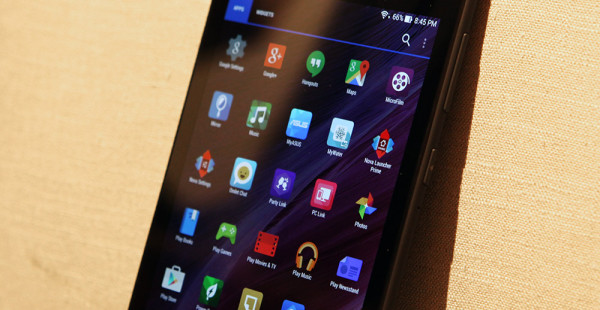

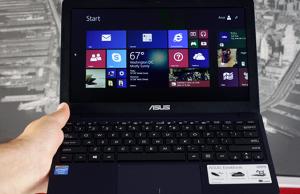
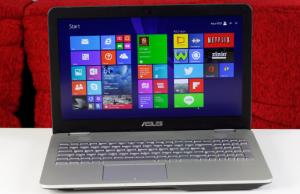
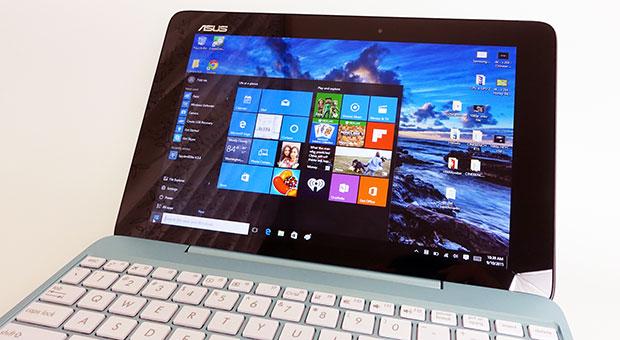




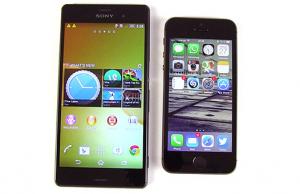




Rob
February 7, 2015 at 7:56 am
Are you planning to review the new Asus Memo Pad 8 (ME581C) as well ?
I think this is the most intersant tablet and
it is full of nice features (slimport, miracast, dlna).
Cheers.
Andrei Girbea
February 7, 2015 at 6:10 pm
Thte search bar should be your friend. We already reviewed it here on the site: https://tlbhd.com/asus-memo-pad-8-me181c-review-18690/
Rob
February 7, 2015 at 10:40 pm
Thanks for the quick replay.
But i meant the ME581C. It is very new and it seems to have better specs as the ME572.
I apologize because after a new web research, i find out that it seems to be available just in Europe and not jet in the us.
asus.com/de/Tablets/ASUS_MeMO_Pad_8_ME581C/specifications/
8″ LED 1920×1200 Screen IPS
Pen function supported ( Tip size > 1.5mm)
WLAN802.11a/b/g/n/ac
Bluetooth V4.0, NFC
Support Miracast
Andrei Girbea
February 9, 2015 at 6:25 pm
Hmmm, got it, sry for the confusion. I’ll try to see if I could get my hands on it.
Dennis
March 26, 2015 at 7:31 am
Two interesting points on the German site for the 8″ model. Wi-Fi was reported as poor on this model but the 8″ shows AC as available, which should be great with the right router. This model states no HDMI support but big brother includes Slimport. As Nexus Mirroring is often erratic, maintaining Slimport on both models would have seemed a good idea.
Rick Boozer
March 30, 2015 at 3:14 am
Just got the tablet. My evaluation is the same as yours, except I have rock solid Wi-Fi. A really great tablet for the money.